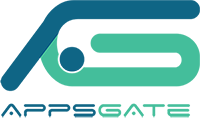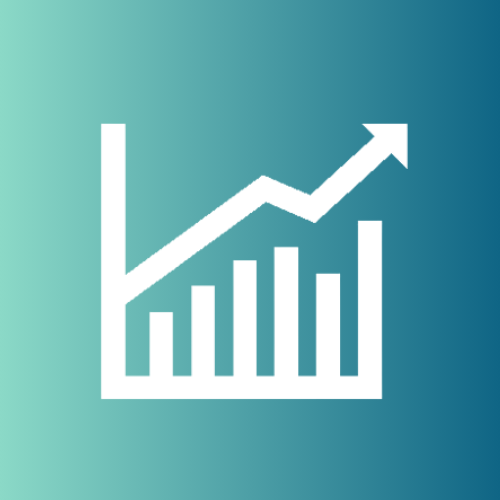APPSGATE PROPERTY MANAGEMENT SOLUTION
APPSGATE Property management software is a specialized software solution designed to streamline and automate various tasks and processes involved in property management. It helps property managers, landlords, and real estate professionals effectively manage their properties, tenants, leases, and financial transactions. Here are some key features commonly found in property management software:
- Tenant and Lease Management: Track tenant information, lease agreements, lease terms, and rent payment records. Generate and manage lease contracts, handle lease renewals and terminations, and communicate with tenants.
- Tenant and lease management is a crucial aspect of property management. It involves effectively managing tenant information, lease agreements, and related processes throughout the tenancy lifecycle. Tenant and lease management software provides tools and features to streamline these tasks. Here are some key features typically found in tenant and lease management software:
- Tenant Database: Maintain a centralized database of tenant information, including contact details, lease history, payment records, and communication logs. Easily search and retrieve tenant information when needed.
- Lease Agreement Management: Create, store, and manage lease agreements electronically. Track lease terms, renewal dates, rent amounts, and other lease-specific details. Set reminders for lease renewals or terminations.
- Rent Collection and Invoicing: Automate rent collection processes by generating rent invoices or statements. Track rent payments, send automated reminders for overdue payments, and record payment history.
- Tenant Portals: Provide tenants with self-service portals where they can access lease information, view payment history, make rent payments, and submit maintenance requests. Enhance tenant satisfaction and streamline communication.
- Lease Renewals and Terminations: Streamline the lease renewal and termination process. Set up automated notifications and reminders for lease expirations. Easily generate renewal agreements or termination notices.
- Rent Increase Management: Manage rent increases smoothly by defining rules and automating the calculation of rent adjustments based on lease terms or local regulations. Generate rent increase notices and track compliance.
- Document Management: Store and manage lease-related documents, tenant applications, insurance certificates, and other relevant files in a secure and organized manner. Easily access and share documents when required.
- Tenant Screening and Applicant Management: Track tenant applications, conduct background checks, and assess creditworthiness. Maintain a history of application details, screening results, and communication with applicants.
- Tenant Communication: Maintain communication logs and correspondence history with tenants. Send automated notifications and announcements, such as maintenance schedules or policy updates.
- Reporting and Analytics: Generate reports and analytics related to tenant and lease information, rent collection, occupancy rates, and lease expirations. Gain insights into key metrics and make data-driven decisions.
- Rent Collection and Accounting: Automate rent collection processes, generate rent invoices or statements, and track payment statuses. Manage property-related expenses, handle accounting tasks, and generate financial reports.
- Rent collection and accounting are crucial aspects of property management that involve managing rental payments, tracking financial transactions, and maintaining accurate accounting records. Rent collection and accounting software provides tools and features to streamline these processes. Here are some key features typically found in rent collection and accounting software for property management. Rent collection and accounting software streamlines financial processes, improves accuracy, and saves time for property managers. It helps automate rent collection, maintain transparent financial records, and streamline reporting.
- Rent Invoicing: Generate and send rent invoices to tenants electronically. Customize invoice templates with property and payment details. Automate recurring invoices for monthly or periodic rent payments.
- Online Payment Integration: Integrate with online payment gateways to offer tenants convenient online payment options. Enable tenants to make rent payments securely using credit/debit cards, ACH transfers, or other electronic payment methods.
- Rent Tracking and Reminders: Track rent payments and set up automated reminders for tenants to ensure timely payments. Monitor payment statuses and send notifications for overdue payments.
- Late Fee Calculation: Automate the calculation of late fees based on predefined rules or lease agreements. Apply late fees to overdue payments and include them in rent statements or invoices.
- Payment Reconciliation: Reconcile rent payments received with the corresponding invoices or statements. Easily identify discrepancies and resolve payment-related issues.
- Rent Receipts: Generate rent receipts for tenants to acknowledge rent payments. Customize receipt templates and provide a record of payment for tenants' reference.
- Expense Tracking: Track property-related expenses, such as maintenance costs, repairs, utilities, or property management fees. Categorize and allocate expenses to specific properties or units for accurate financial tracking.
- General Ledger and Chart of Accounts: Maintain a comprehensive general ledger to record all financial transactions related to rent collection and property expenses. Customize the chart of accounts to suit your accounting needs.
- Financial Reporting: Generate financial reports, such as income statements, cash flow statements, rent roll reports, or balance sheets. Gain insights into rental income, expenses, and overall financial performance.
- Integration with Accounting Software: Integrate with accounting software, such as QuickBooks or Xero, to streamline financial processes. Sync rental income, expenses, and other financial data seamlessly.
- Compliance and Tax Reporting: Ensure compliance with tax regulations and generate necessary reports for tax purposes. Simplify tax reporting by having accurate and organized financial records.
- Rent collection and accounting are crucial aspects of property management that involve managing rental payments, tracking financial transactions, and maintaining accurate accounting records. Rent collection and accounting software provides tools and features to streamline these processes. Here are some key features typically found in rent collection and accounting software for property management. Rent collection and accounting software streamlines financial processes, improves accuracy, and saves time for property managers. It helps automate rent collection, maintain transparent financial records, and streamline reporting.
- Tenant and lease management is a crucial aspect of property management. It involves effectively managing tenant information, lease agreements, and related processes throughout the tenancy lifecycle. Tenant and lease management software provides tools and features to streamline these tasks. Here are some key features typically found in tenant and lease management software:
MAINTENANCE MANAGEMENT:
- Maintenance and Work Order Management: Track and manage property maintenance requests, schedule and assign work orders to vendors or maintenance staff, and monitor the progress of maintenance tasks. Maintain a history of maintenance activities and associated costs.
Maintenance and work order management are essential aspects of property management that involve handling maintenance requests, scheduling and tracking maintenance tasks, and ensuring timely resolution of property issues. Maintenance and work order management software provides tools and features to streamline these processes.
Maintenance and work order management software simplifies the maintenance process, improves efficiency, and enhances tenant satisfaction. It helps property managers streamline maintenance requests, track work order progress, and ensure timely resolution of property issues.
Here are key features typically found in maintenance and work order management software for property management:
- Maintenance Request Submission: Enable tenants or property occupants to submit maintenance requests electronically. Provide a user-friendly interface for tenants to describe the issue, attach photos, and specify the urgency.
- Work Order Creation and Assignment: Create work orders based on maintenance requests received. Assign work orders to maintenance staff or external contractors based on availability, skills, or specialization.
- Priority and Escalation Management: Set priorities for maintenance tasks based on urgency or severity. Implement escalation procedures to ensure timely resolution of critical issues.
- Maintenance Scheduling and Calendar Integration: Schedule maintenance tasks and allocate resources efficiently. Integrate with calendars to track and manage maintenance staff availability, appointments, and work schedules.
- Communication and Notification: Communicate updates and progress of maintenance tasks to tenants, property owners, or occupants. Send automated notifications about work order status changes or appointment reminders.
- Asset and Inventory Management: Track property assets, equipment, and inventory items used for maintenance tasks. Maintain a record of asset details, maintenance history, and warranty information.
- Vendor and Contractor Management: Manage a database of vendors and contractors for maintenance services. Track vendor information, performance history, and contracts. Streamline communication and collaboration with external service providers.
- Mobile Accessibility: Enable maintenance staff to access work orders, update task statuses, and capture relevant information using mobile devices. Improve efficiency and real-time communication.
- Maintenance Cost Tracking: Capture and track costs associated with maintenance tasks, including labor, materials, and external services. Monitor maintenance expenses and analyze cost trends for budgeting purposes.
- Work Order Progress Tracking: Monitor the progress of work orders from creation to completion. Update task statuses, record completion dates, and maintain a history of maintenance activities.
- Reporting and Analytics: Generate reports and analytics related to maintenance activities, including work order status, response time, resolution time, and cost analysis. Gain insights into maintenance performance and identify areas for improvement.
- Property Marketing and Listings: Create and manage property listings, including descriptions, photos, and availability. Publish listings on websites, portals, and social media platforms to attract potential tenants or buyers.
- Online Tenant Portals: Provide tenants with self-service portals where they can access their lease information, make rent payments, submit maintenance requests, and communicate with property managers.
- Document Management: Store and manage property-related documents such as lease agreements, inspection reports, maintenance records, and insurance policies. Maintain a centralized repository for easy access and retrieval.
- Reporting and Analytics: Generate various reports and analytics to gain insights into property performance, financial metrics, occupancy rates, and maintenance activities. Track key performance indicators (KPIs) and monitor portfolio performance.
- Communication and Collaboration: Facilitate communication and collaboration between property managers, tenants, vendors, and owners. Send automated notifications, share documents, and maintain communication logs.
- Integration with Accounting and Financial Systems: Integrate with accounting software or financial systems to streamline financial processes and ensure accurate bookkeeping.
- Mobile Accessibility: Access property management software and perform tasks on mobile devices, allowing property managers to handle tasks on-the-go and provide better customer service.
Welcome to Odoo ERP Implementation Services
We aim to provide comprehensive execution and implementation of Odoo ERP Software to our clients so that they can take advantage of all the additional modules suiting their business requirements to meet their business objectives.
NEED
Odoo Services ?
We are Here to Help..!
OUR PRODUCTS



